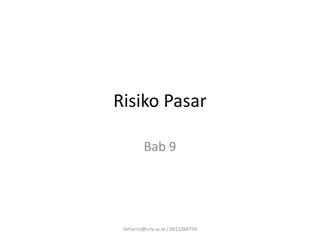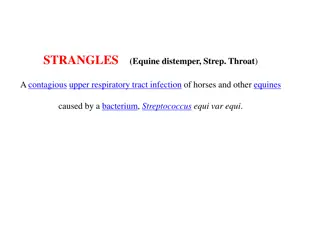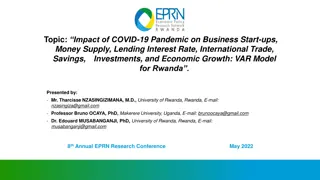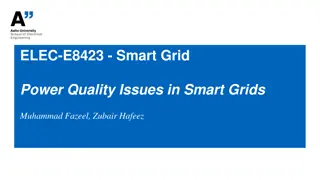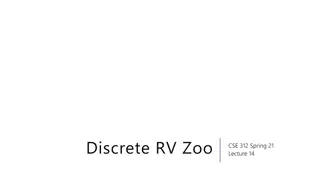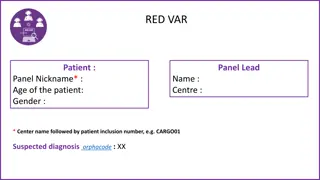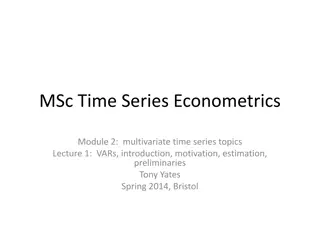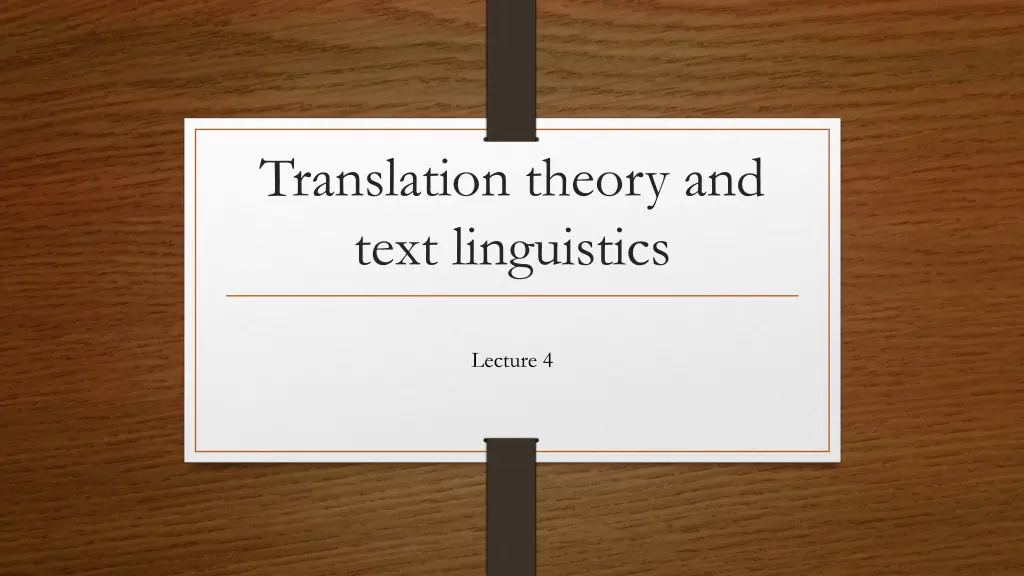
Understanding Text-Centeredness in Translation Theory
Explore the concept of text-centeredness in translation theory, emphasizing the central role of the text in the translation process. Discover how linguistic theory shifted focus from text to the sentence level in the 1950s-1970s, leading to the identification of regular correspondences and universal features of text.
Download Presentation

Please find below an Image/Link to download the presentation.
The content on the website is provided AS IS for your information and personal use only. It may not be sold, licensed, or shared on other websites without obtaining consent from the author. If you encounter any issues during the download, it is possible that the publisher has removed the file from their server.
You are allowed to download the files provided on this website for personal or commercial use, subject to the condition that they are used lawfully. All files are the property of their respective owners.
The content on the website is provided AS IS for your information and personal use only. It may not be sold, licensed, or shared on other websites without obtaining consent from the author.
E N D
Presentation Transcript
Translation theory and text linguistics Lecture 4
Text-centeredness in translation The idea that the text plays a central role in translation has been present for many centuries. Translators have never translated anything else but texts, and the outcome of translating has never been anything else but text. Translation = comprehension of the original text + creation of the translated text.
Disregarding the text-level The linguistic theory of translation became an independent discipline in the 1950s-1960s and it started studying various text types using the tools of linguistics. Since linguistics at that time was focused on the sentence, the use of linguistics in translation theory shifted the focus of attention from text to sentence. Equivalences between the SL and TL were studied on the sentence level and below, on the level of words, phrases and grammatical structures.
Disregarding the text-level 1950 Retsker argues for the existence of regular correspondences in his article, which apply irrespective of the situation, the context or the text. He distinguished 3 kinds of correspondences: 1. Constant: technical terms, geographical names. 2. Variant: the TL offers several possibilities and translators have to choose among them. 3. Occasional: the translator has to create correspondence on the basis of the context. This showed that equivalences between words and phrases of the SL and TL can be described, systematised and classified, and translation was in fact guided by objective rules.
Disregarding the text-level In the 1960s-1970s a number of manuals appeared, describing the lexical and grammatical equivalences of specific language pairs. They considered only the two linguistic systems involved in translation and saw a translating problem in every single difference between the systems. Scholars predicted translation problems, like in cases where a particular grammatical category is absent in one language and present in another (articles in Russian and English). Research on translation theory was more about contrastive linguistics at that time.
Returning to the text 1970s the need for a text linguistic approach in translation theory appeared with the emergence of text linguistics. 1969 Nida and Taber s book The theory and practice of translation was released. The authors compiled a list of 8 universal features of text, which can be used to mark the units larger than sentences.
The 8 universal features of text 1. The marking of the beginning and end of the discourse. 2. The marking of major internal transitions. 3. The marking of temporal relations between events. 4. The marking of spatial relations between events and objects. 5. The marking of logical relations between events. 6. The identification of participants. 7. Highlighting, focus, emphasis. 8. Author involvement.
Returning to the text 1973 Shveitser: For translation theory it is not only the comparison of systems that is important, but also the comparison of the textual realisations of the systems differences . 1975 Barkhudarov: Translators do not deal with abstract language systems or linguistic units, but with specific texts. The creation of a scientific translation theory is only possible with the comparative analysis of SL and TL texts. In the opposite case we can only speak about contrastive linguistics and not translation theory .
The internal text structure approach Theme-rheme or topic-comment structure of sentences: sentences start with generally known information (theme) and the 2nd part of the sentence contains new information (rheme). 1976 Chernyakhovskaya s book Translation and the structure of sense was the first study to apply the text linguistic approach to translation theory. In her view, transformational strategies used in the course of translation are not motivated by the different lexical and grammatical systems of the 2 languages, but by the need to preserve the structure of sense.
The internal text structure approach The sense structure of the sentence = the already known part (theme/topic) + new part (rheme/comment) + emphatic part (focus). The aim of translation operations is the preservation of the sense structure characteristic of the SL text. Chernyakhovskaya also provided analyses of Russian sentences on the basis of a large number of newspaper articles to support her claims. English and
The text type-typology approach The other text linguistic trend approached translation from the direction of text types. 1971 Katharina Reiss made an attempt to develop a translation-focused text typology. She distinguished 4 basic text types, determined by the role of language in the given text. Three main functions of language: description, expression and appeal.
4 main text types 1. Content-focused texts: the descriptive function of language dominates (press releases, commentaries, news reports, manuals, essays, reports). The translator s task is to transmit the SL content in full, using the most appropriate devices of the TL to make sure that the reader s attention is not distracted from the content. 2. Form-focused texts: the expressive function of language dominates (literary prose (essays, belles-lettres), imaginative prose (short stories, romances), poetry). The main task of the translator is to reflect primarily the form and not the contents. The translator will choose the TL form that best approaches the effect in TL readers that the SL form produced in the SL reader. He tries to create formal analogy, and not identical content.
4 main text types 3. Appeal-focused texts: the appeal function of language dominates (commercials, ads, texts related to missionary work, propaganda materials). The aim of the translator is not to reflect the content or the form of the SL text, but to render its function, to make sure that the TL text will provoke the same response as the SL text. 4. Audio-medial texts: the text reaches the receptor not via printed media (radio, TV genres, theatre plays, operas, comedies). The message reaches the receiver via a channel the characteristic features of which need to be taken into account.
The typology of specialised texts Vannikov lists 12 features on the basis of which scientific and technical texts have to be characterised to provide sufficient guidance for translators. 1. On the basis of linguistic organisation: texts with a rigorous structure, texts with a soft structure. 2. On the basis of the functional style: scientific, technical, official, legal, journalistic texts. 3. On the basis of functional register: scientific, technical, official, legal, journalistic texts with subtypes. 4. On the basis of manner of expression: narrative, descriptive, explanatory, argumentative texts. 5. On the basis of logical contents: exposition/discussion, justification, conclusion, definition.
The typology of specialised texts 6. On the basis of subject-related contents: texts in exact, natural, social sciences. 7. On the basis of manner of communication: texts for oral or written communication. 8. On the basis of genre: book, monograph, article, dissertation, presentation, communiqu , report, comments. 9. On the basis of the primary or secondary nature of the information: primary information, secondary information (report, annotation, review, bibliography). 10. On the basis of expressive-stylistic features: stylistically rich (colourful), stylistically poor (not colourful) text. 11. On the basis of general pragmatic features: texts addressed to the SL reader, to the TL reader, to any audience. 12. On the basis of pragmatic features: informative, normative, instructive, systematising texts.
Integration of the two approaches In the 2nd half of the 1980s, a number of attempts were made to integrate the two text linguistic approaches to translation, i.e. the internal organizational and the text typological approaches. Vermeer tries to define the rules of cultural transfer. He says that the most important rule of translation is the aim of translation, followed by the coherence rule (intra-textual coherence the internal coherence of the text and inter- textual coherence equivalence with the SL text).
Integration of the two approaches Blum-Kulka investigated the shifts that occur in the process of translation in the text s external , i.e. open and visible organisation (cohesion) and internal logical/content- related organisation. Shifts in cohesion are often necessary, but shifts in coherence are always regarded as mistakes. Toury defines discourse transfer as the incorrect transfer of textual features from the SL text into the TL text. Weizman lays down the principles of text-level comparison. In analysing translated texts, 4 aspects need to be considered: 1. text-building norms of the SL text, 2. text-building norms of the TL text, 3. general tendencies of texts translated from different languages into the TL, 4. general tendencies of translated texts.
Research on quasi-correctness It explores the differences between two corpora of texts: between authentic or primary texts and translated or secondary texts. These differences are hardly perceptible on the sentence level: it is the whole of the translated text that differs from original TL texts. What the reader notices is that the text is slightly odd, without being able to identify the source of this oddity. Reasons: the devices ensuring coherence in the SL do not always work in the same way in the TL; slight shifts in emphases, distortions in functional sentence perspective; shifts in sentence connections and theme-rheme relations.
Scepticism regarding the discourse-level approach According to Peter Newmark, it is the advance of text linguistics that forces translation scholars to treat the text as the basic unit of translation. The every day practice of translators, however, shows that translators always try to choose the smallest unit of translation, and only resort to the whole text when they experience difficulty or when finally checking their translation. Newmark: Many translators say you should never translate words, you translate sentences or ideas or messages. I think they are fooling themselves. The SL texts consist of words, that is all that is there, on the page.
The central role of text linguistics in translation studies The discourse approach is the most fruitful branch of translation research. If the aim of translation research is to find objective explanations for as many translation decisions, which used to be classed as subjective, as possible and to reveal as many regularities in the process of translation as possible, then the research methods, conceptual apparatus and terminology of text linguistics hold enormous potential for the future.



